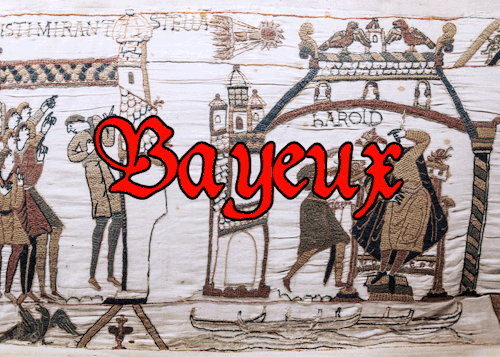| THE B A Y E U X T A P E S T R Y . The Bayeux Tapestry is an embroidered clot
| THE B A Y E U X T A P E S T R Y . The Bayeux Tapestry is an embroidered cloth nearly 70 metres (230 ft) long and 50 centimetres (20 in) tall, which depicts the events leading up to the Norman conquest of England concerning William, Duke of Normandy, and Harold, Earl of Wessex, later King of England, and culminating in the Battle of Hastings.The tapestry consists of some fifty scenes with Latin tituli, embroidered on linen with coloured woollen yarns. It is likely that it was commissioned by Bishop Odo, William’s half-brother, and made in England—not Bayeux—in the 1070s. In 1729 the hanging was rediscovered by scholars at a time when it was being displayed annually in Bayeux Cathedral. The tapestry is now exhibited at the Musée de la Tapisserie de Bayeux in Bayeux, Normandy, France.The designs on the Bayeux Tapestry are embroidered rather than woven, so that it is not technically a tapestry. Nevertheless, it is always referred to as such. The tapestry can be seen as the final and best known work of Anglo-Saxon art, and though made after the Conquest was both made in England and firmly in an Anglo-Saxon tradition, points now accepted by French art-historians. Such tapestries adorned both churches and wealthy houses in England, though at 0.5 by 68.38 metres (1.6 by 224.3 ft, and apparently incomplete) the Bayeux Tapestry is exceptionally large. Only the figures and decoration are embroidered, on a background left plain, which shows the subject very clearly and was necessary to cover very large areas. -- source link
Tumblr Blog : elbridge-gerry.tumblr.com
#history meme#bayeux#french history#english history#norm conquest

